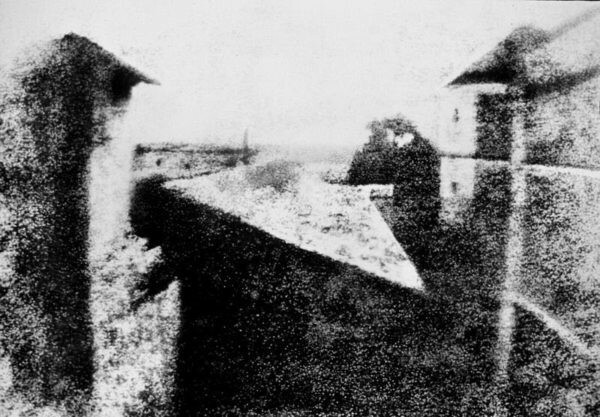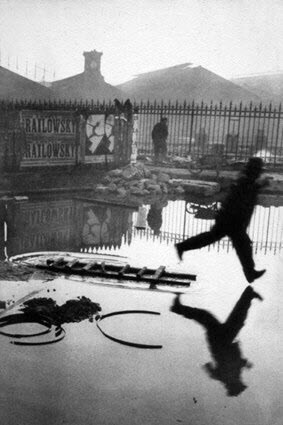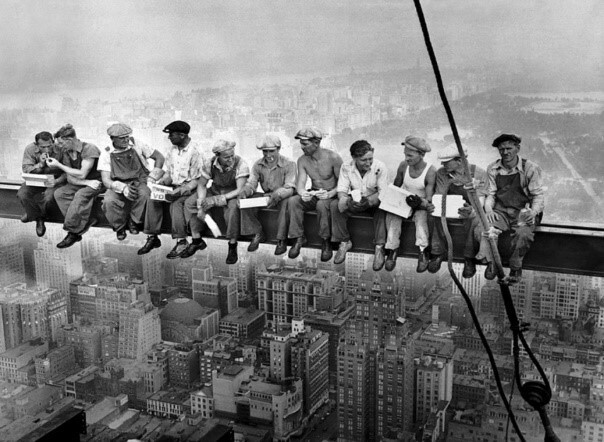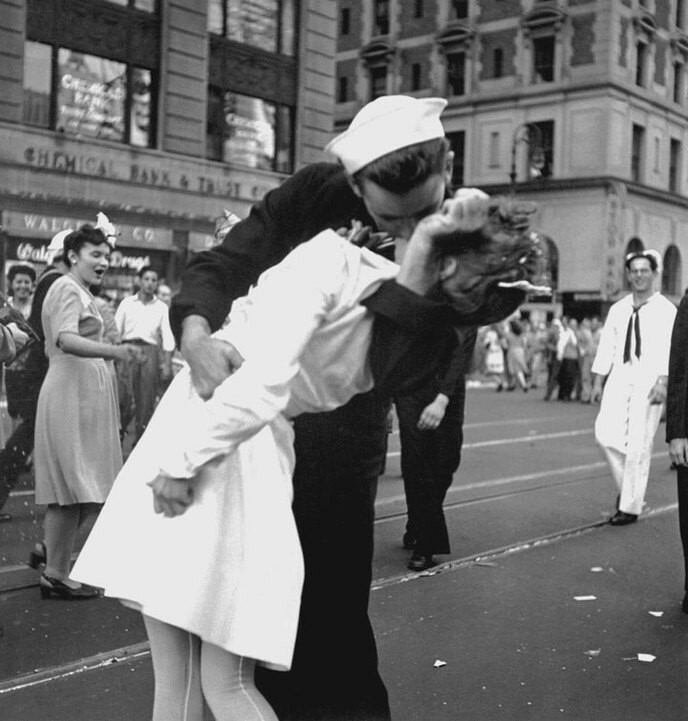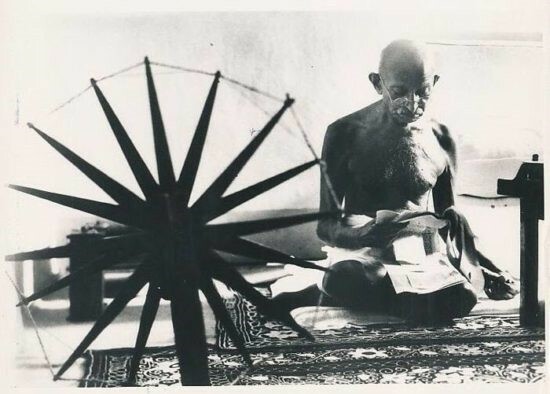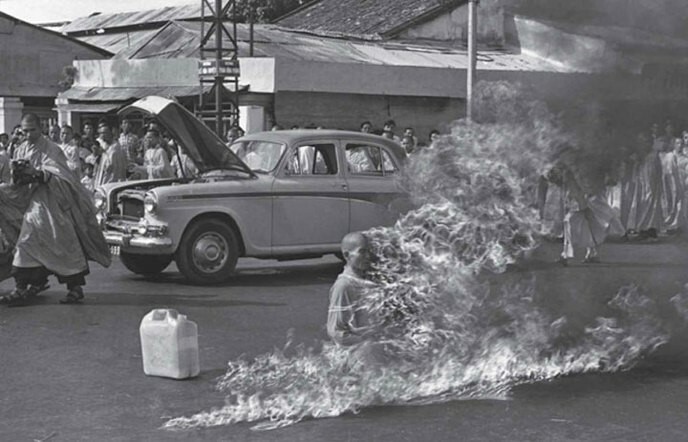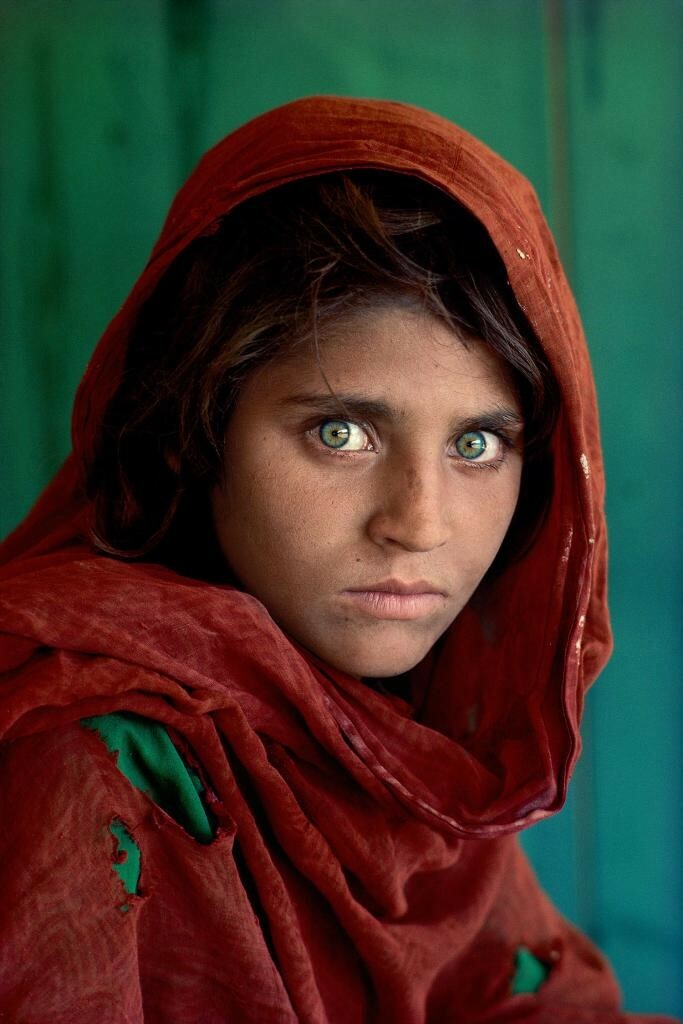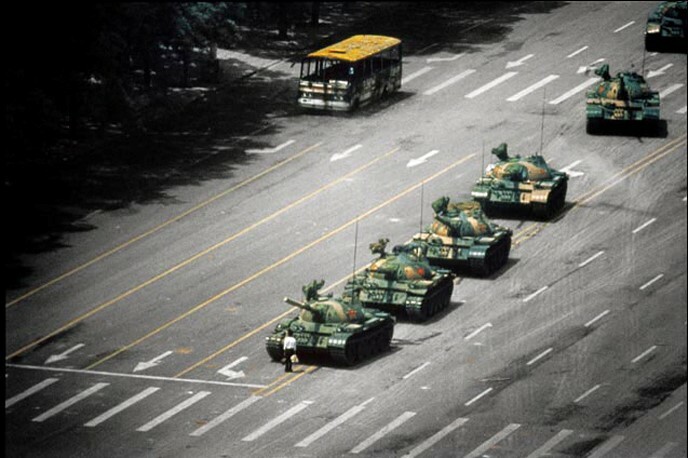Table of Contents
Every August 19th, we celebrate World Photography Day, marking the anniversary of the daguerreotype’s announcement in 1839. This milestone not only introduced photography but also democratized art, allowing people to capture and share moments like never before. Today, as we reflect on photography’s evolution—from its early, intricate processes to today’s digital ease—we recognize its power to capture, connect, and inspire. Join us in celebrating how photography continues to shape our world and tell our stories.
World Photography Day 2025 Date – August 19
In this article readers can get a glimpse on
- History and Significance of World Photography Day
- World Photography Day Theme 2025
- World Photography Day Quiz
World Photography Day
1: Who was the first woman President of India?
World Photography Day 2025 will be on Tuesday, August 19th. This day celebrates the invention of the daguerreotype in 1839, which was the start of modern photography. It’s a time to appreciate how photography has evolved and continues to capture moments, tell stories, and connect people around the world.
Free UPSKILLING Courses!
Take your first step toward mastering in-demand skills, acing interviews, and securing top-tier jobs with Entri's free upskilling courses.
Start Learning!History of World Photography Day
France was a pioneer country in the world of photography. It gave the world its first photographic procedures. Before the world could even think that a moment could be permanently captured through a photograph, the Frenchman Louis Daguerre created a miracle. It was in the year 1839 that Louis Daguerre found the daguerreotype, majorly a photographic procedure. This process was officially announced to the world by the French Academy of Sciences.
Even more interesting fact about this invention is that the whole procedure was made available for free to the world. This landmark event was declared as free to the entire world on the 19th of August, 1839. Thus every year, this day is celebrated as World Photography Day. In 1861, progress could be seen in photography when the first colour photograph emerged on the scene by Thomas Sutton. Exactly two decades later, the first hallmark innovation in the field of photography made inroads.
The digital camera was invented by Kodak. With this innovation, much of the old photography themes were suspended completely to make way for sophistication, filters, effects and 3D visualization treats. Thus the journey from a rare click to every second click on our mobile is worth traversing through. International Photography day extends this journey and allows the world know how and what it took for a photo to become a masterpiece.
World Photography Day 2025 Theme
The theme for World Photography Day 2025 is “MY FAVORITE PHOTO.”
This theme encourages people around the globe to not only share a photograph they’ve taken but to also share the personal story behind it. The initiative aims to highlight the powerful connection between a photographer and their work, celebrating the emotions, memories, and narratives that make a particular image special.
By inviting people to use social media to share their chosen photo with the hashtags #WorldPhotographyDay and #WorldPhotographyDay2025, the theme fosters a global community event. It’s a way to appreciate the diverse reasons why individuals are drawn to photography—whether for documenting life, capturing beauty, or preserving a moment in time. The focus on a “favorite photo” shifts the emphasis from technical perfection to personal meaning, making the celebration accessible and meaningful to everyone, from professional photographers to casual enthusiasts.
World Day of Photography 2025 – Significance
A photo is nothing but a combined bag of emotions taking place at a specific instant of time, exhibited beautifully through the art of photography. It conveys unlimited feelings and emotions to the person who clicks the photograph and those who enjoy it. The day is very important and grasps a special mention in the modern world. The most important part is inspiring young budding professionals and interested candidates to pursue photography as a passion.
The significance also includes inspiring students to treat photography as a career. Photography could be a rewarding profession too! Many of us are not even aware of the various fields in photography. Various personalities worldwide have tasted huge success in areas like wildlife photography, nature photography, childhood photography and similar themes.
Free UPSKILLING Courses!
Take your first step toward mastering in-demand skills, acing interviews, and securing top-tier jobs with Entri's free upskilling courses.
Start Learning!International Photography Day Quotes 2025
- “Photography is the story I fail to put into words.” — Destin Sparks
- “A photograph is the pause button of life.” — Unknown
- “Photography is the art of frozen time… the ability to store emotion and feelings within a frame.” — Unknown
- “The best thing about a picture is that it never changes, even when the people in it do.” — Andy Warhol
- “Photography is the only language that can be understood anywhere in the world.” — Bruno Barbey
- “To me, photography is an art of observation. It’s about finding something interesting in an ordinary place… I’ve found it has little to do with the things you see and everything to do with the way you see them.” — Elliott Erwitt
- “The camera is an instrument that teaches people how to see without a camera.” — Dorothea Lange
- “Photography is the beauty of life captured.” — Terry Richardson
- “Every photograph tells a story, but some are louder than others.” — Unknown
- “A picture is a secret about a secret, the more it tells you the less you know.” — Diane Arbus
World Photography Day 2025 Celebration
Celebration of World Photography day can be indoors or outdoors. Indoor photo shoots or themed destination photoshoot rule the themes for the day. Celebrations rotate around the art of photography. Photography is an art or more of a craft that is a creative beat that mingles the knowledge of science and creative instincts. Celebrations around the world rotates around this concept. Expert photographers, creative workers in the field of photography are celebrated on this day. Let us all smile for a day worth celebrating the photographers of the world.
World Photography Day Activities 2025
World Photography Day is a great opportunity to dive into photography with these engaging activities:
- Photo Walks: Explore and capture new or familiar places.
- Photography Challenges: Participate in or create themed photo contests.
- Photo Exhibitions: Attend or host an exhibition to showcase and appreciate photography.
- Workshops and Webinars: Learn new techniques and connect with other photographers.
- Social Media Campaigns: Share your favorite photos and join global conversations using hashtags like #WorldPhotographyDay.
- Collaborative Projects: Work with others on themed photo projects.
- Photography Contests: Enter or organize contests to challenge your skills.
- Community Outreach: Use photography to support local causes or events.
- Photo Journal: Document your day or a specific period with a personal photo journal.
- Reflect and Share: Share stories behind your images and discuss the impact of photography.
10 most famous photos of all time: Artalistic’s curated selection
View from the Window at Gras – Joseph Nicéphore Niépce, 1827
This is the very first photograph taken ever. The scientist Nicéphore Niépce (1765-1833) was captivated by the blossoming craze for Lithography and planned to place polished pewter plates coated with a light sensitive chemical called bitumen of Judea inside a camera obscura. Niépce took this famous picture from his house in Saône-et-Loire. The exposure took eight hours. Once the plate was removed from the camera he used a combination of lavender oil and white petroleum to develop the image.
Man Jumping the Puddle – Henri Cartier-Bresson, 1932
The French photographer Henri Cartier-Bresson took this famous photo at the back of the Saint-Lazare train station in Paris. Cartier-Bresson is known for forming the term “the decisive moment,” which mentions to a photographer’s ability to capture a subject at exactly the right instant and in doing so smashing normal life to recover a transcendent moment. The man jumping over the water can be compared to a dancer whose silhouette is reflected most elegantly in a puddle. A mysterious, grey background juxtaposes this elegant figure. The image also perfectly reflects Roland Barthes’ theory about the punctum and stadium, which he defines in his book Camera Lucida: Reflections on Photography (1980). In this seminal book he explains punctum as the features of a photograph that generate or convey a meaning without invoking any recognizable symbolic system. This kind of meaning is special to the response of the individual viewer of the image. The punctum punctuates the stadium – historical, social or cultural meanings extracted via semiotic analysis – and as a result pierces its viewer. To let the punctum effect, the viewer must renounce all knowledge. Barthes asserts that the punctum is not just the sum of wishes projected into the photograph. Rather, it appears from details that are unintended or uncontrolled by the photographer, namely the detail that attracts the eye and the general impression that emerges from a photograph.
Lunch atop a Skyscraper – Unknown, 1932
The names of the subjects in this famous photo or the name of the photographer is not known. This image of workers taking a daredevil’s lunch break at the top of a skyscraper definitely makes the viewer weak but it also brings their attention to the very risky life the workers building the Rockefeller Center lead. In the first half of the 20th century, dozens of workers died after fatal falls during the construction of different skyscrapers.
V-J Day in Times Square – Alfred Eisenstaedt, 1945
In the backwash of World War II, Alfred Eisenstaedt took to the streets of New York’s Time Square to preserve celebrations marking the end of the war. This is one of the most famous photos of the 20th century; anyhow while some critics expect it to be capturing a loving reunion between a sailor and a nurse and others see it as a sexual assault. The latter interpretation resonates with the present day #MeToo movement.
Gandhi and the Spinning Wheel – Margaret Bourke-White, 1946
Margaret Bourke-White, an iconic female photographer from the 20th century, commemorated Gandhi several times and is well known for this famous photo that was taken two years before his death. This picture was first published in the American magazine Life. After Gandhi’s death, on January 30, 1948, Bourke-White’s photographs of Gandhi escalated in price and took a significant place in art history.
The Burning Monk – Malcom Browne, 1963
On June 11, 1963, in a street in Saigon, Vietnam, the monk Thich Quang Duc killed himself as an act of protest over discrimination toward Buddhists by the South Vietnamese government. During a demonstration, he asked to be drenched with gasoline and asked that he be set on fire. Associated Press photographer Malcolm Browne was on the scene at the time and captured a stunning image, a world-famous photo that also won a Pulitzer Prize. The American fusion-rap band Rage Against The Machine used it for the cover of their 1992 self-titled album.
Napalm Girl – Nick Ut, 1972: a famous photograph supporting human rights
The Vietnamese photographer Nick Ut captured this stunning photograph on June 8, 1972. During the Vietnam conflict, the American army often used napalm during their missions, anyhow this time one of the planes by mistake hit the village of Trang Bang, injuring many civilians. Nick Ut brought the 9-year-old girl in this photograph to an American hospital where she was saved. After 17 skin implants, the young girl went on to live a full life and even had two children.
Afghan Girl – Steve McCurry, 1984
Steve McCurry took this famous photograph during a trip to Afghanistan in 1984 to make a document on the migration of Afghan refugees. This picture of 17-year-old Sharbat Gula was clicked in the refugee camp of Nasir Bagh. It became the symbol of the Afghan struggle and was appeared on the front page of the National Geographic newspaper in June 1985.
Tank Man – Jeff Widener, 1989
This famous photo of a young Chinese man standing in front of tanks during the 1989 Tiananmen Square outbreak made Jeff Widener the most famous photojournalist of the late 20th century. The day before taking this photograph Widener had been wounded by a stone and was told to stay in his hotel, while all the other American and European journalists took refuge at the airport. Widener took the chance to photograph the outbreak from his hotel window. He ran out of film and asked an Australian tourist staying in the hotel to buy a roll of film. Widener used this roll to take this famous photograph, which is now broadly held to be one of the most well known photos ever taken and won the Pulitzer Prize in 1990.
Death at the Gates of Paradise – Javier Bauluz, 2000
Javier Bauluz was awarded the Pulitzer Prize for this famous photograph, which highlights the large inequality between social classes in the world. This image shows two tourists passively sitting in front of the dead body of a migrant who was trying to reach Europe.
World Photography Day 2025 – Photography Ideas
To celebrate World Photography Day, try these creative photography ideas to capture stunning and memorable images:
1. Golden Hour Magic
Photograph during the golden hour—just after sunrise or before sunset. The soft, warm light enhances the beauty of your subjects.
2. Captivating Reflections
Explore reflections in water, glass, or mirrors to create unique and visually interesting compositions.
3. Macro Marvels
Get close to small subjects like flowers or insects to reveal intricate details that are often missed.
4. Timeless Black and White
Convert your photos to black and white to emphasize contrast, texture, and mood, giving them a classic feel.
5. Dynamic Long Exposures
Use long exposure techniques to capture movement, such as flowing water or city lights, creating striking visual effects.
6. Dramatic Silhouettes
Shoot against bright backgrounds to produce powerful silhouettes, perfect for capturing moments during sunrise or sunset.
7. Enchanting Night Photography
Explore the night sky, city lights, or star trails. Use a tripod and long exposures to capture the beauty of the night.
8. Elegant Minimalism
Focus on simple, clean compositions with minimal elements to highlight subtle details and create a serene atmosphere.
9. Creative Portraits
Experiment with unconventional angles, reflections, or creative lighting in your portraits to bring a fresh perspective.
10. Urban Exploration
Photograph abandoned or hidden urban spaces, capturing intriguing textures, structures, and contrasts.
11. Delicious Food Photography
Take beautifully styled shots of dishes or ingredients, playing with colors, textures, and lighting to make your food photos stand out.
12. Expressive Self-Portraits
Create self-portraits using creative lighting, props, or settings to express your personality and experiment with different looks.
13. Nature and Wildlife Wonders
Capture the beauty of animals, plants, or landscapes. Explore different times of day to add varied lighting to your nature shots.
14. Artistic Motion Blur
Photograph moving subjects with a slower shutter speed to introduce a sense of motion and dynamism to your images.
15. Playful Reflections and Shadows
Capture reflections and shadows to add depth and intrigue to your photos, creating visually compelling compositions.
World Photography Day Competition Ideas
Here are some concise World Photography Day competition ideas:
- “An Entire Day”: Capture the essence of a full day with a series or a single image.
- Golden Hour Shots: Submit photos taken during the golden hour, highlighting warm, soft light.
- Reflections and Mirrors: Showcase images using reflections or mirrors.
- Black and White: Focus on striking black and white photography with strong contrasts.
- Macro Moments: Capture detailed close-ups of small subjects.
- Night Photography: Submit photos of night scenes, city lights, or star trails.
- Creative Portraits: Experiment with unique and imaginative portrait styles.
- Urban Exploration: Photograph abandoned or hidden urban spaces.
- Food Photography: Submit beautifully styled images of food.
- Nature and Wildlife: Highlight the beauty of animals, plants, or landscapes.
- Motion Blur: Use motion blur to create dynamic and engaging images.
- Minimalist Photography: Focus on simplicity with clean, minimalist compositions.
- Self-Portraits: Get creative with self-portraits using unique lighting or props.
- Photo Storytelling: Create a photo series that tells a compelling story.
- Social Media Showcase: Share images on social media with a specific hashtag for engagement.
World Photography Day Quiz 2025
A) Louis Daguerre
B) Joseph Nicéphore Niépce
C) George Eastman
3. Which is the largest photography museum in the world?
A) George Eastman Museum, USA
B) Musée de l’Élysée, Switzerland
C) Tokyo Photographic Art Museum, Japan
A) Kodachrome
B) Autochrome Lumière
C) Polacolor
5. Which company introduced the first commercial digital camera?
A) Canon
B) Nikon
C) Kodak
A) 1975
B) 1981
C) 1986
A) Bokeh
B) HDR
C) Panorama
A) Steve McCurry
B) Annie Leibovitz
C) Henri Cartier-Bresson
A) Shutter speed
B) Light sensitivity
C) Aperture size
Want More Engaging Questions?
Download our FREE PDF packed with insightful quiz questions to test your knowledge!
🔽 Click below to get your free copy now! 🔽
World Photography Day Quiz 2025 PDF
World Photography Day serves as a global reminder of photography’s timeless power to capture, preserve, and communicate moments that define our shared human experience. From the earliest Daguerreotype images to today’s instant digital photographs, the medium has evolved remarkably while maintaining its core essence—telling stories without words. This day not only honors the technical and artistic achievements of photography but also celebrates the photographers, both amateur and professional, who contribute to shaping our visual history. It inspires people to look at the world through a creative lens and share their unique perspectives. By doing so, it fosters appreciation for the art and its role in connecting cultures and communities.
In an age where images dominate communication, World Photography Day reminds us to value authenticity, creativity, and meaningful storytelling. As technology advances, the possibilities for innovation in photography continue to expand, opening new horizons for visual expression. The day encourages everyone to engage with photography, whether by exploring its history, practicing new techniques, or simply appreciating impactful images. It is an opportunity to reflect on how pictures influence the way we perceive and remember events. Ultimately, World Photography Day reinforces that a single image has the power to inspire, inform, and unite people around the globe.
Free UPSKILLING Courses!
Take your first step toward mastering in-demand skills, acing interviews, and securing top-tier jobs with Entri's free upskilling courses.
Start Learning!Frequently Asked Questions
What is World Photography Day?
World Photography Day is an annual celebration of the art, science, and history of photography. It is observed globally to recognize the power of images in storytelling and preserving memories. The day marks the announcement of the Daguerreotype process in 1839, a milestone in photography. People from all walks of life participate by sharing photographs and hosting exhibitions. It’s a day to appreciate photography’s role in connecting people and cultures worldwide.
When is World Photography Day celebrated?
World Photography Day is celebrated every year on August 19. This date was chosen to honor the French government’s public release of the Daguerreotype process in 1839. The event marked photography’s accessibility to the world. Today, photographers and enthusiasts share pictures on social media to commemorate it. Exhibitions, contests, and photography workshops are also popular ways to celebrate.
Why is World Photography Day important?
The day highlights photography’s role in recording history and preserving culture. It raises awareness of photography as both an art form and a communication tool. By celebrating it, people acknowledge the skill and creativity involved in capturing images. It also encourages budding photographers to explore their passion. Most importantly, it brings together communities through the universal language of pictures.
Who took the first photograph in history?
The first permanent photograph was taken by Joseph Nicéphore Niépce in 1826 or 1827. It was titled “View from the Window at Le Gras.” Niépce used a camera obscura and a bitumen-coated plate to capture it. The image took several hours to expose properly. This groundbreaking achievement paved the way for the development of modern photography.
What was the Daguerreotype process?
The Daguerreotype process was an early photographic technique developed by Louis Daguerre. It used a silver-plated copper sheet treated with chemicals to create a single image. The process produced sharp and detailed photographs but required long exposure times. It became the first publicly available photographic method in 1839. This invention marked the true beginning of photography as a practical medium.
How has photography evolved over time?
Photography has progressed from long-exposure, black-and-white images to instant digital photos. Early techniques like the Daguerreotype and tintypes required great skill and patience. The invention of film cameras made photography more accessible to the public. Later, digital technology revolutionized image capture and sharing. Today, smartphones allow almost everyone to be a photographer instantly.
How can people celebrate World Photography Day?
People celebrate by taking and sharing photographs that inspire or tell a story. Many join photography contests or display their work in exhibitions. Social media campaigns often trend with hashtags dedicated to the day. Workshops and lectures help educate people about photography’s techniques and history. Some use the day to experiment with new photographic styles or equipment.
What impact has photography had on society?
Photography has transformed how we record history, share experiences, and express creativity. It allows events to be documented accurately and preserved for future generations. Images can inspire social change by highlighting important issues. Photography also helps bridge cultural and language barriers. Its accessibility has made visual storytelling a part of everyday life.
Who are some famous photographers to know about?
Steve McCurry is known for his iconic ‘Afghan Girl’ portrait. Henri Cartier-Bresson pioneered street photography and the “decisive moment” concept. Ansel Adams is celebrated for his stunning black-and-white landscapes. Annie Leibovitz is famous for her creative celebrity portraits. These photographers have shaped the art and influence of photography worldwide.
What is the future of photography?
The future of photography is likely to be shaped by AI, virtual reality, and advanced editing tools. Technology will allow even more realistic and immersive images. Social media will continue to influence photographic trends. Environmental and ethical photography may gain more importance. However, the core purpose—capturing moments and telling stories—will always remain the same.



